Someone Gave Me A Sourdough Starter ... Now What?
This post may contain affiliate links.
So, someone handed you a jar of sourdough starter and now you're wondering what on earth to do with it? First of all, welcome! You’re now part of a wonderfully slow, satisfying, and delicious way to bake bread (and so much more).
In this post, I’ll walk you through exactly what you need to get started, how to care for your new starter, and where to go when you're ready to bake your first loaf of sourdough bread.
The best thing about being given a mature sourdough starter is that you don't need to wait for it to be ready, you can bake with it straight away! If you've been given some dried sourdough starter, you'll need to read these instructions to activate your dried sourdough starter.
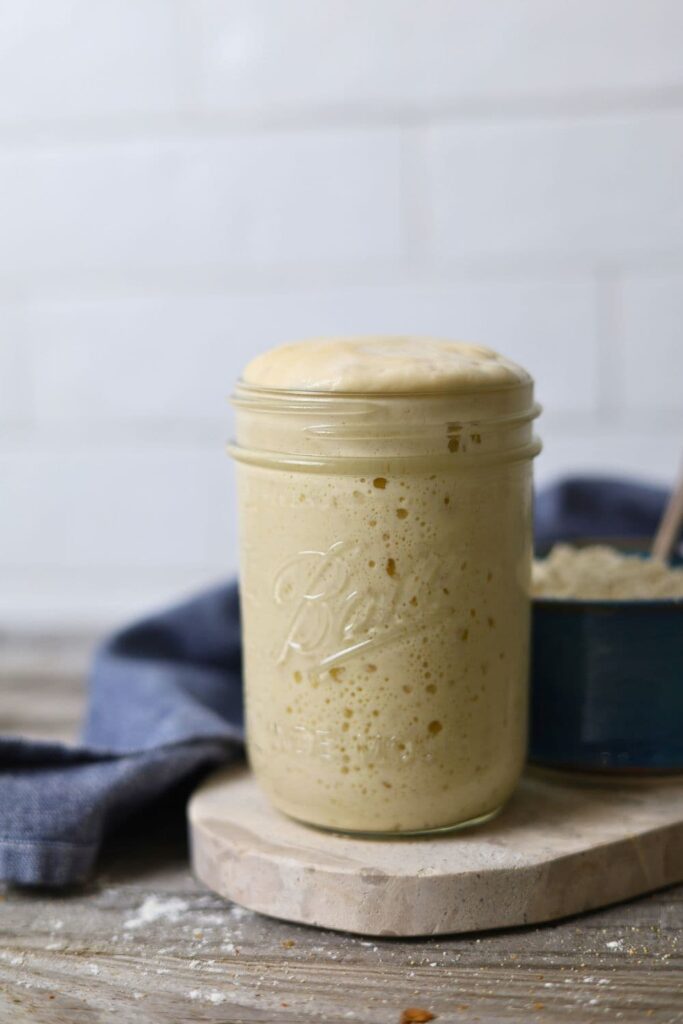
What Is Sourdough Starter?
Sourdough starter is a living culture made of flour and water, full of wild yeast and beneficial bacteria. When fed regularly, it becomes bubbly, active, and ready to leaven bread naturally, no commercial yeast required! If you want to dig in deeper, you might also like to learn about the science behind sourdough.
What Equipment Do You Need to Care for a Starter?
You don’t need a lot to get started, just a few kitchen basics:
- A clean jar with a lid - I recommend a glass jar with a plastic lid. You'll find my recommendations for the best sourdough starter jar here.
- Digital kitchen scale - makes feeding so much easier and more accurate. You can read more about why weighing sourdough ingredients is best here.
- Spatula - A jar spatula, or alternatively a butter knife is a good option, just be careful when using it with a glass jar as it can break the bottom of the jar. You can find a list of my favorite sourdough equipment here.
- Flour - you can start with all purpose flour, whole wheat, or a mix.
- Water - filtered or dechlorinated is best, especially if your tap water is heavily treated (you can read about the best water for sourdough here).
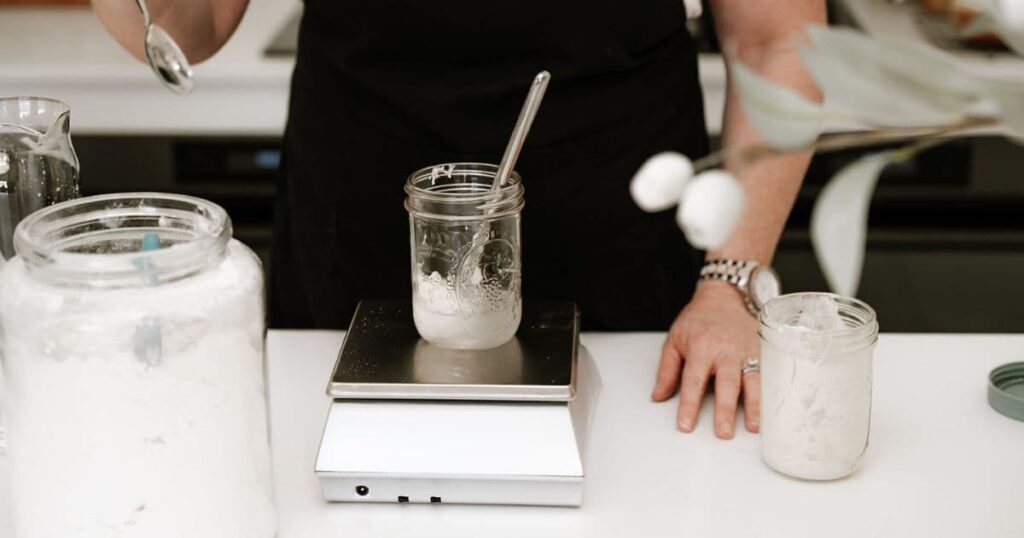
How to Feed Your Sourdough Starter
Your starter needs regular meals of flour and water to stay active and healthy. The timing and frequency of feeding depends on whether you keep it on the counter or in the fridge. You might also want to familiarise yourself with sourdough starter ratios.
Feeding on the Counter (Daily)
If you want to keep your starter at room temperature and bake regularly (every day or two), feed it once a day:
Basic feeding ratio (1:1:1):
- 50g starter
- 50g flour
- 50g water
Discard all but about 50g of your starter, then feed with equal weights of flour and water. Mix well, cover, and leave on the counter. I've also written a comprehensive guide to feeding your sourdough starter.
You’ll know your sourdough starter is ready to bake with when it’s doubled in size, bubbly, and smells pleasantly tangy.

Storing In The Fridge
If you don’t plan to bake every day, your starter can live in the fridge. Here's how:
- Feed it as above (50g starter, 50g flour, 50g water)
- Place the lid on
- Put into the fridge and leave it there (don't allow it to rise on the counter first).
When you’re ready to bake, take it out, feed it, and let it become active before using it in a recipe. You'll find this guide to storing sourdough starter in the fridge helpful in answering questions about how long it can stay in the fridge and ensuring it's ready when you want to bake.
What Type of Flour Should I Use?
Most starters thrive on unbleached plain/all-purpose flour, but you can also use bread flour, whole wheat, or a mix. If the person who gave you the starter used a specific flour, it’s a good idea to continue with that until it’s well-established in your care, but you can feed your sourdough starter different flour.
How to Know If Your Starter Is Healthy
A happy, active sourdough starter will:
- Rise and fall predictably after each feeding
- Smell yeasty or slightly tangy (not rotten or foul)
- Be bubbly and airy when active
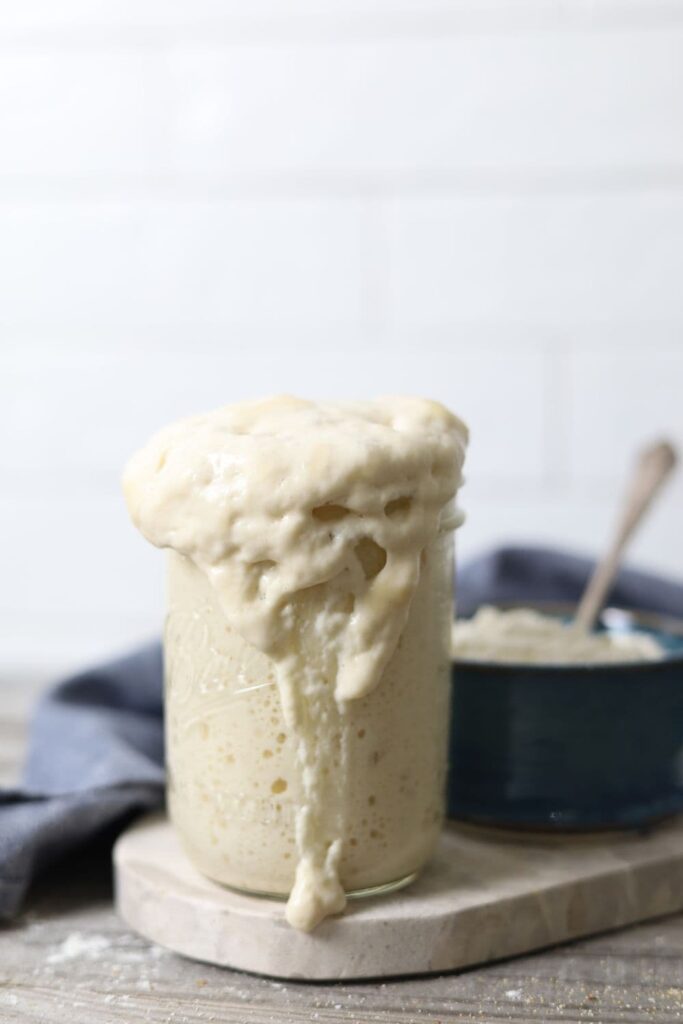
If it separates with a layer of liquid (called “hooch”), just stir it in or pour it off and give your starter a fresh feeding.
Ready to Bake? Start Here!
Once your starter is doubling in size within 4–6 hours of feeding, it’s ready to bake with!
- How To Bake Your First Sourdough Loaf
- Easy Same Day Sourdough Bread Recipe
- How To Create a Sourdough Baking Timeline
- Troubleshooting Your Sourdough Starter
- Sourdough Glossary
You can also use sourdough discard in all kinds of fun and tasty ways like pancakes, muffins, cookies, and more. You'll find a tonne of sourdough discard recipes here. Because you've been given a mature sourdough starter, you can use your discard right away!
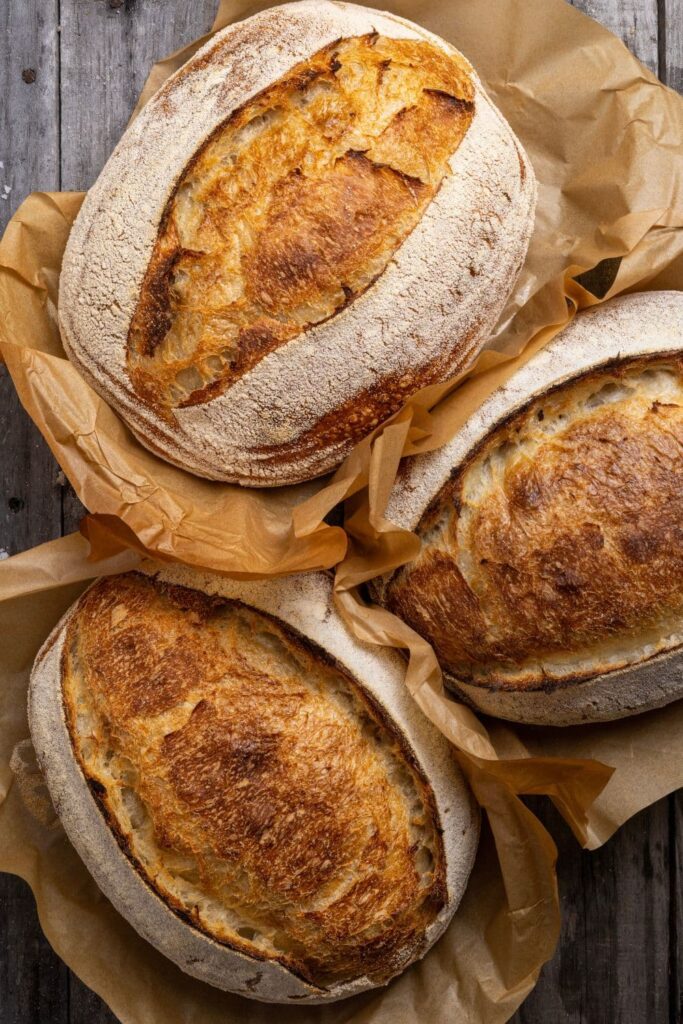
Tips to Keep in Mind
- Your starter is very forgiving so don’t stress! If you miss a feeding or it looks sleepy, just feed it again and it’ll usually bounce back.
- Keep a bit of starter “unfed” as backup in the fridge or dehydrate some sourdough starter to make sure you never lose it completely.
- Label your starter jar with feeding times or notes if you’re new to the process.
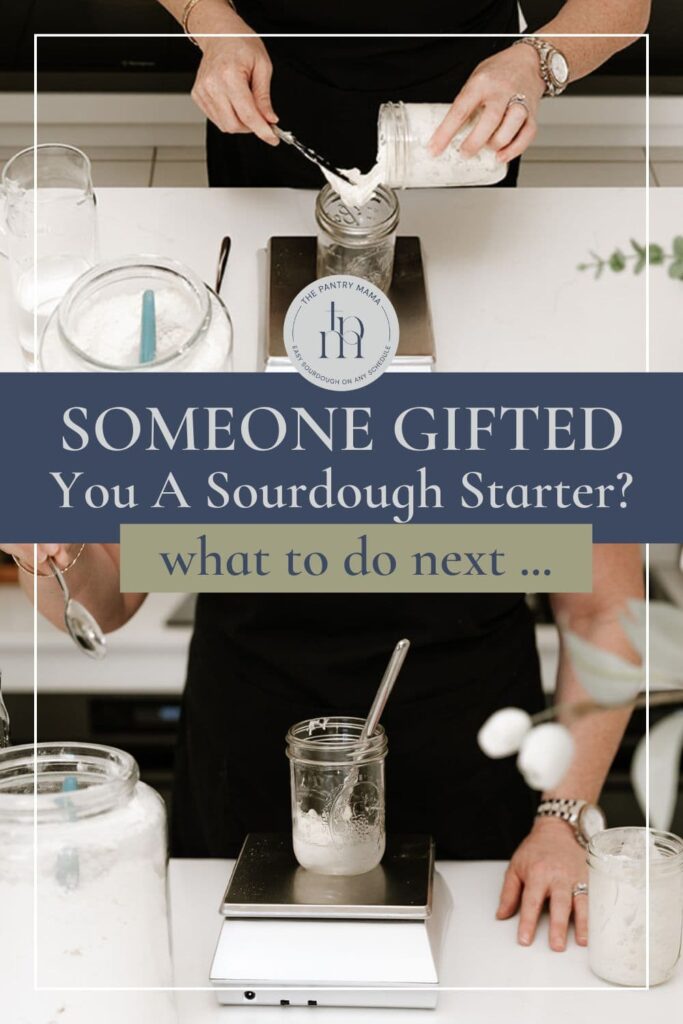
You're Going To Love Baking Sourdough!
Getting gifted a sourdough starter is like being handed a tiny piece of a living tradition, and now you get to carry it on. With a little care and curiosity, you'll soon be baking fresh, crusty sourdough bread right in your own kitchen.
Have more questions? Drop them in the comments below and I'll be sure to come back and answer them.


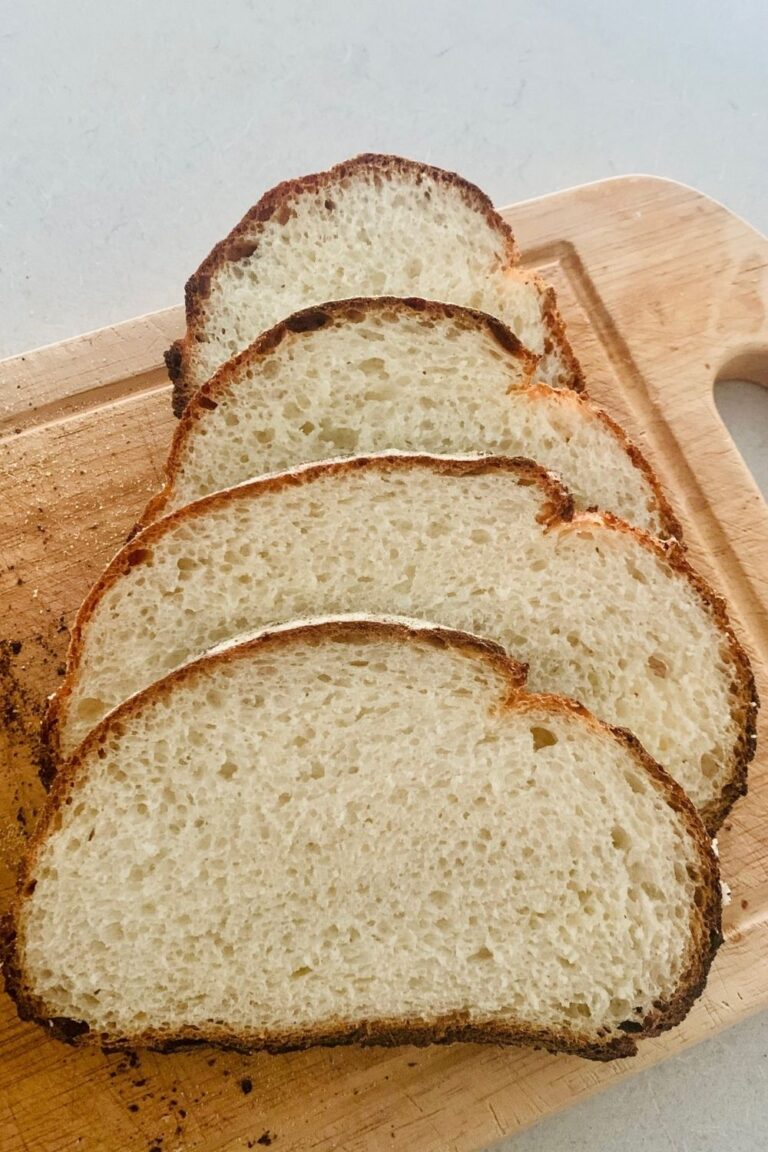
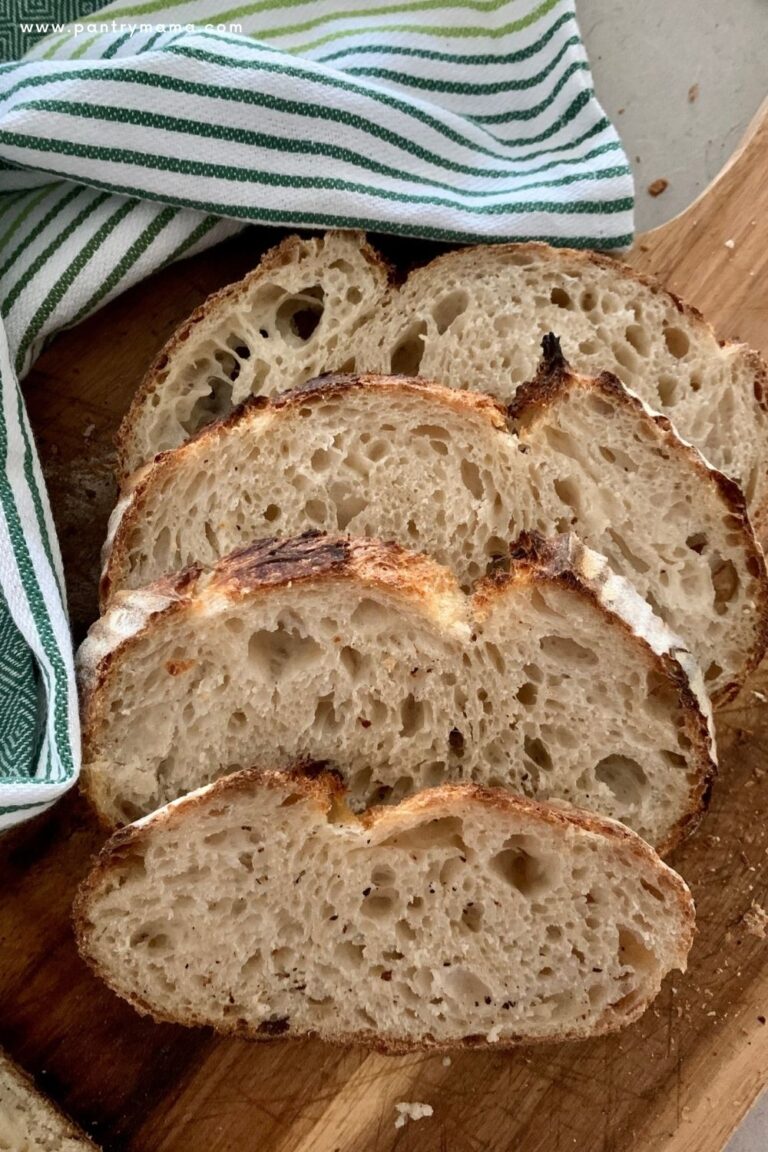
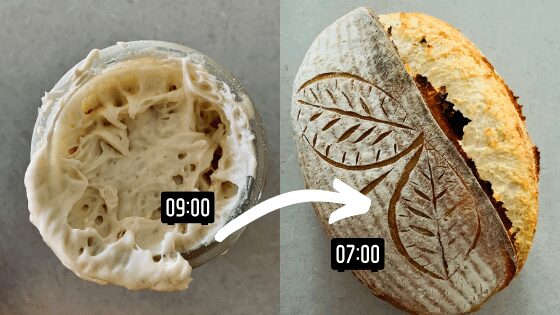
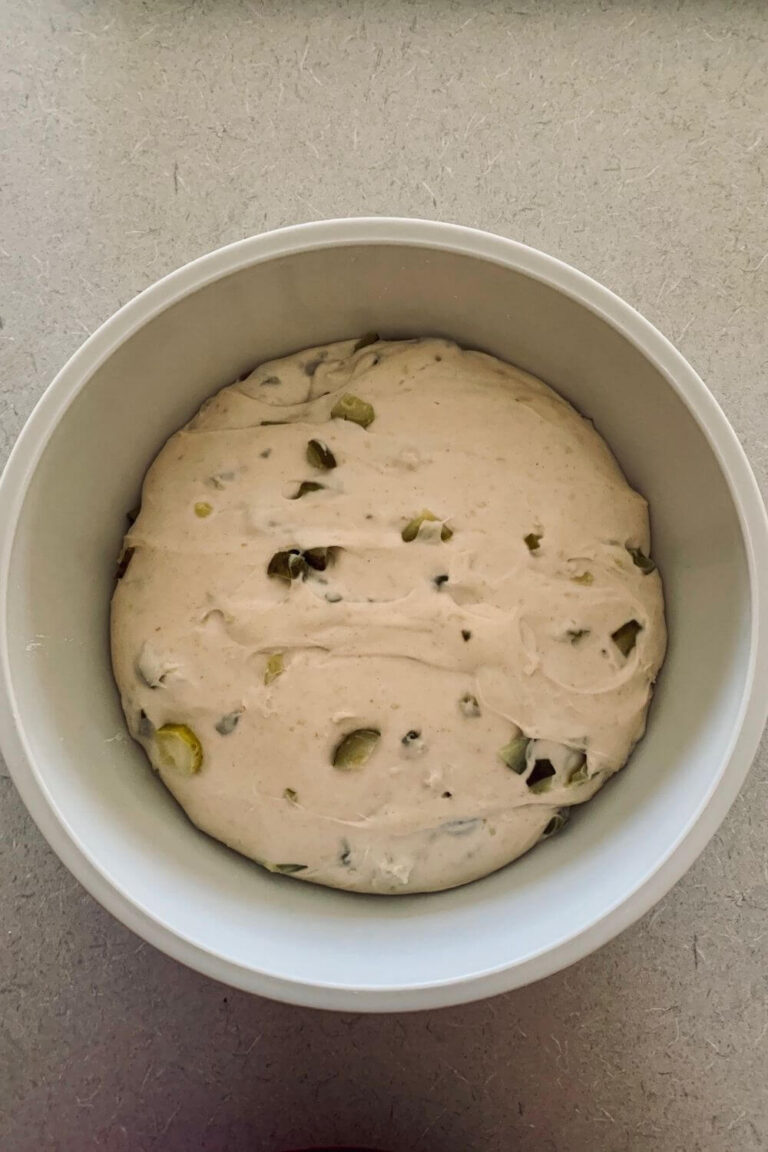

Hello, fantastic article. I was given 27 g of active starter, I fed it 1:1:1: ratio and the next morning it had doubled in size. What do I do now ? It’s my first starter. I don’t want to lose it or it “die” if that’s even a thing
As long as the starter is mature you can start baking with it right away! You could feed it a little more, so you could feed 27g of starter with 100g of flour and 100g of water so that you have a bit more to play with 🙂 This beginner's sourdough bread recipe is the perfect place to start! xo
I was gifted a sourdough starter. Read your article on it. But how do I always keep a starter if I’m going to use it? Just set some aside? Or can you feed discard to make it active again?
I'm so glad you've got a sourdough starter! That's right, whenever you use your starter, you just keep a little bit to feed for next time. So if you have 150g in your jar and you use 100g for a recipe, then you'd feed the 50g that's remaining in your jar for next time. This article on maintaining a sourdough starter might help to explain further xx